TEXT BY SIMRAN JAIN
PHOTOGRAPHS BY POONAM AND SIMRAN JAIN
Bengaluru, India
A silver kada, the protagonist of this story, isn’t just an ornament, but a reward given for the strength and determination shown by my mother from my great grandmother. Bold and enduring, much like the tales it holds, its grooves and star-like patterns speak of a time long passed.
The kada is crafted from silver, with green patina on its rims—evidence of the natural oxidation that has developed over the years. Intricate patterns of dots, stars, and waves wrap around the kada, which has a diameter similar to a tennis ball. Surprisingly, it feels light, especially when compared to the heavy kadas my great-grandmother adored. I am told she had a fondness for jewelry, often decking herself in elaborate pieces crafted by my great-grandfather, who owned a gold and silver business. During her lifetime, she wore kadas so heavy they could weigh up to a kilogram. But when she presented my mother with this particular kada, it had to be retrieved from a locker in her room, as something precious, stored away safely. The ornament has not been cleaned to this date, which means that it still may carry the touch of its original bearer.
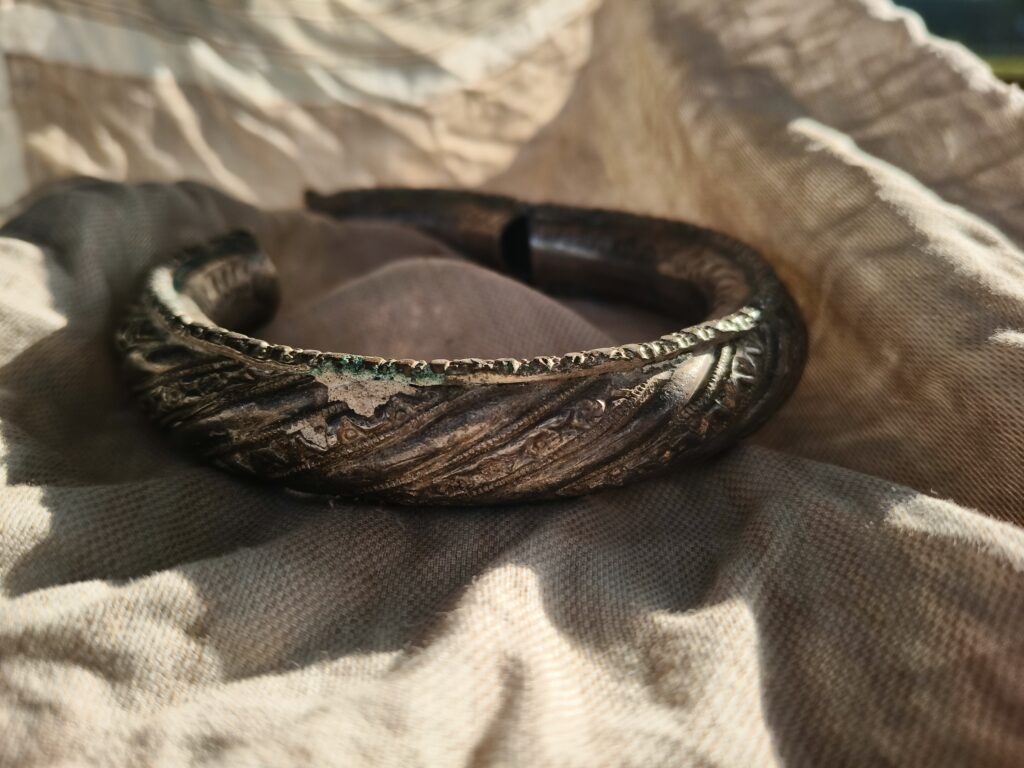
My journey to uncover the kada’s story has been nothing short of an adventure — a puzzle waiting to be solved. Its history, wrapped in silence and secrecy, felt like uncharted territory. I first saw the kada when writing this piece, and even as I was learning about it, I noticed gaps in the story, things that only the original bearer could know and tell, as no one apart from my grandparents was aware that my great-grandmother, Lal Bai, had bestowed it to my mother.
I’m told that Lal Bai came from a very poor background. She was born in the 1920s in a small town in Rajasthan named Nagaur, a place rich with temples and forts, midway between Jodhpur and Bikaner. While Lal Bai grew up in a culture that celebrated the artistry of jewellery, her family could never afford such adornments.
And while I did not grow up in Rajasthan, my grandmother tells me that women from the region often wear payals (anklets) and kadas layered on their legs. These ornaments weren’t just decorative; they were symbols of identity, status, and pride. In some cases, they were even worn to show allegiance to a certain tribe. The kada, with its sturdy design and enduring beauty, often represented strength and resilience, and was thought to ward off effects of the evil eye. Wearing a kada or payal is a practice still followed by some Rajasthani women, but not all.
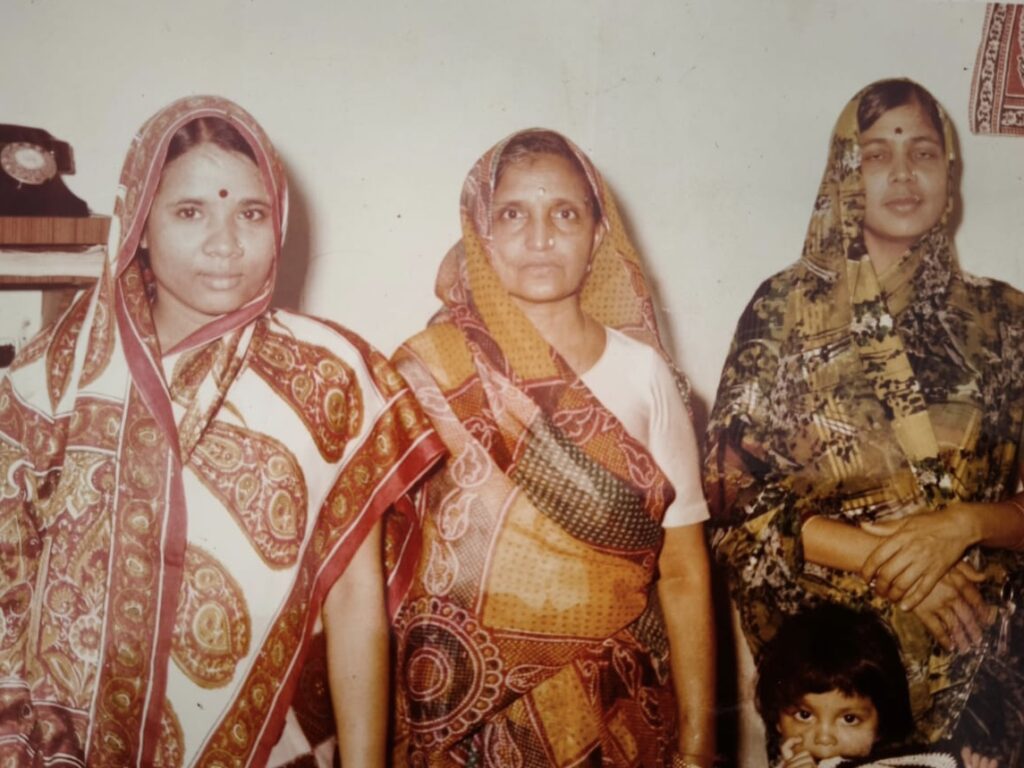
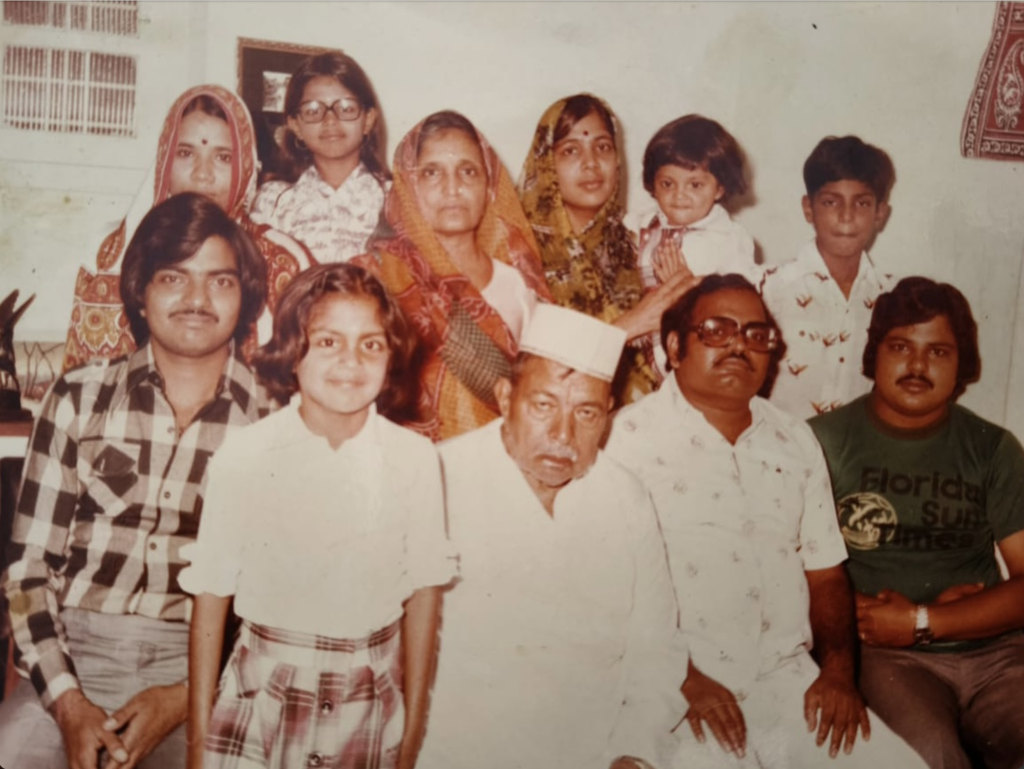
Though my great-grandmother wasn’t known for gifting, her decision to part with this kada was extraordinary. My mother received it after she became a Chartered Accountant in the year 2000 — a moment that marked a significant milestone, but had to remain a secret. Not a single soul could know. But my mother’s journey to that achievement was nothing short of remarkable. She was the first woman in our family to pursue a degree, let alone one as prestigious as Chartered Accountancy. At a time when women were expected to prioritize marriage and family over education, and duties of the home over intellectual pursuits, my mother chose a different path.
My mother grew up in Majestic, a tight-knit community in urban Bengaluru. From a young age, she dreamed of making a mark in the world, and education was her way forward. But society wasn’t ready for her dreams. My mom’s aunts and uncles, who considered gender-based norms and roles very rigidly, questioned why a girl needed so much education. “What’s the point? She’ll end up in the kitchen after marriage and look after the household,” they said. Others warned my grandparents about giving her too much freedom, fearing it would lead her astray. But through it all, my great-grandmother stood as her silent shield. When discussions about marriage arose, she declared, “No one will talk about marriage until she finishes her CA.” Her quiet but firm stance gave my mother the space and support she needed to focus on her studies. My mother, looking back at that time, claims that my great-grandmother must have seen a spark of hope in her.
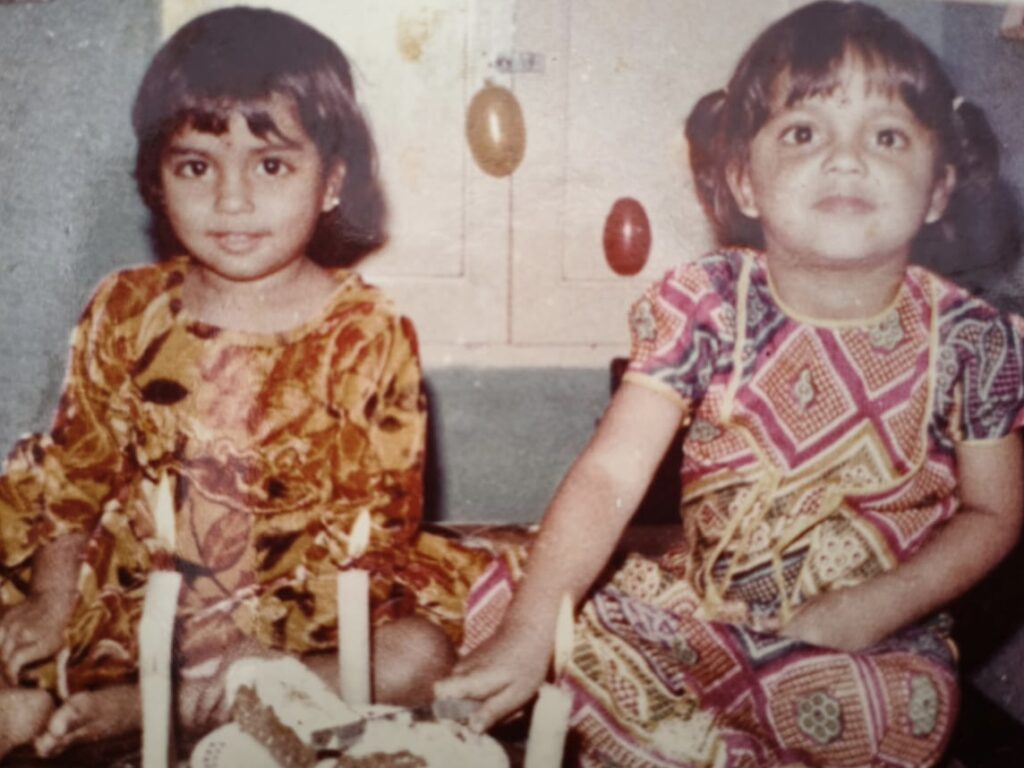

Seven years – spanning her teens to early 20s – of relentless hard work and dedication followed. My mother balanced the expectations of her family (relatives) with her rigorous studies, refusing to let the doubts of others deter her. In August 2000, when she finally achieved her goal and became a Chartered Accountant, it wasn’t just a personal victory—it was a victory for all the women in our family.
It was after this achievement that my great-grandmother handed her the silver kada, and the gesture, though simple, was felt profoundly by my mother. For a woman who rarely gives gifts, this was a moment of pride and recognition. The kada wasn’t a mere jewellery—it was an award of the courage and determination that my mother had shown to reach this milestone.
My mother’s achievement inspired other women in our family and community to dream bigger. Women who had once doubted their own potential saw her story as proof that they, too, could achieve greatness. To this day, my mother is respected and seen as strong. She paved the way for others, proving that education and ambition weren’t just privileges for men. She showed that a woman’s place wasn’t confined to the kitchen or the home—it was wherever she chose to make her mark.
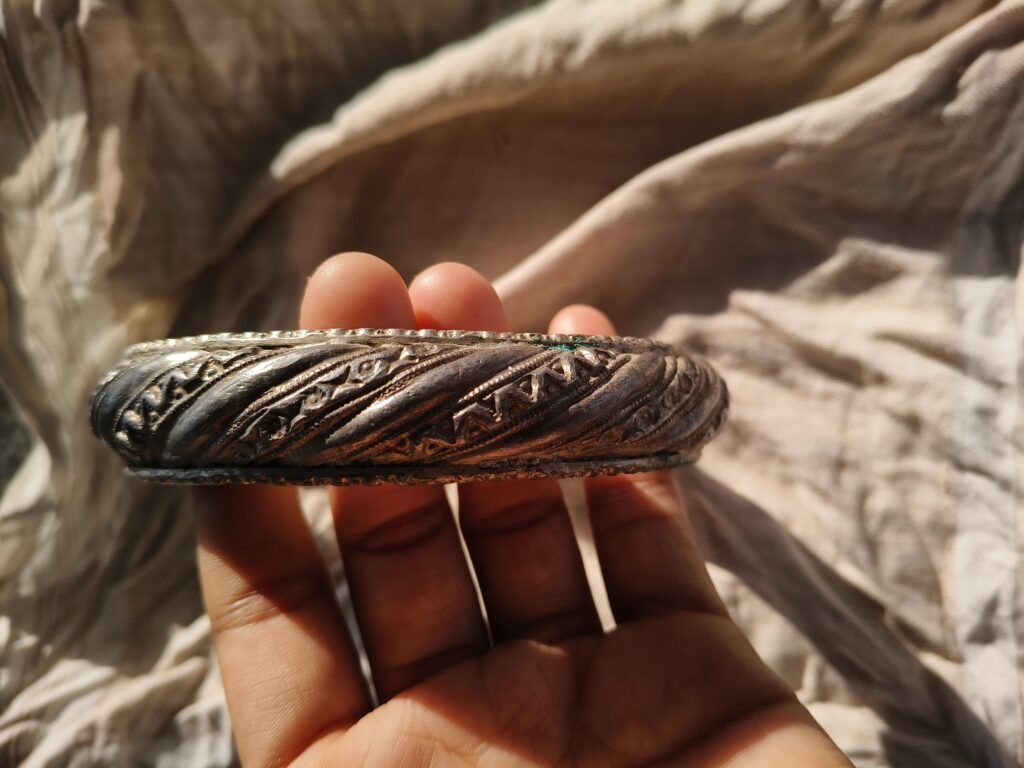
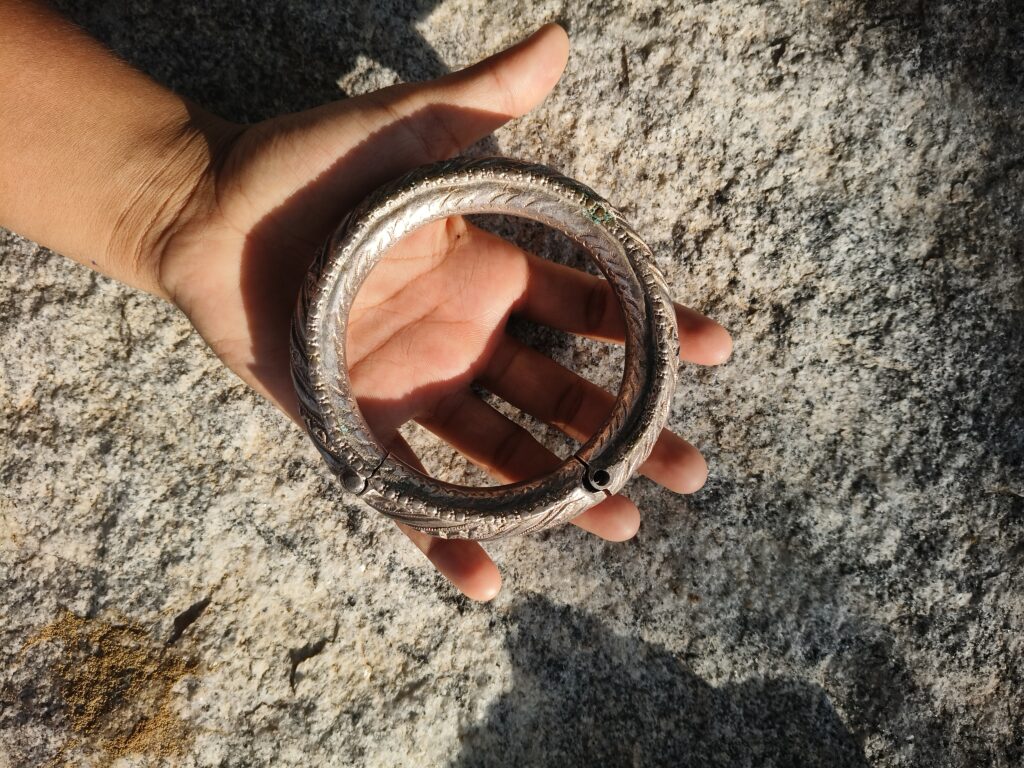
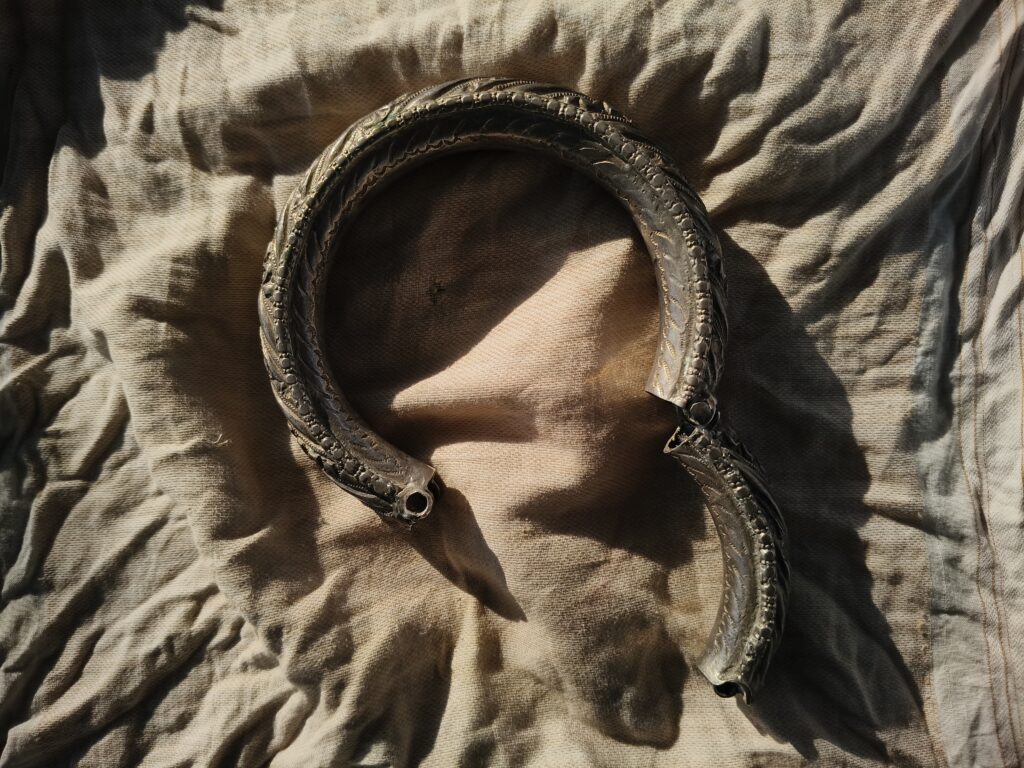
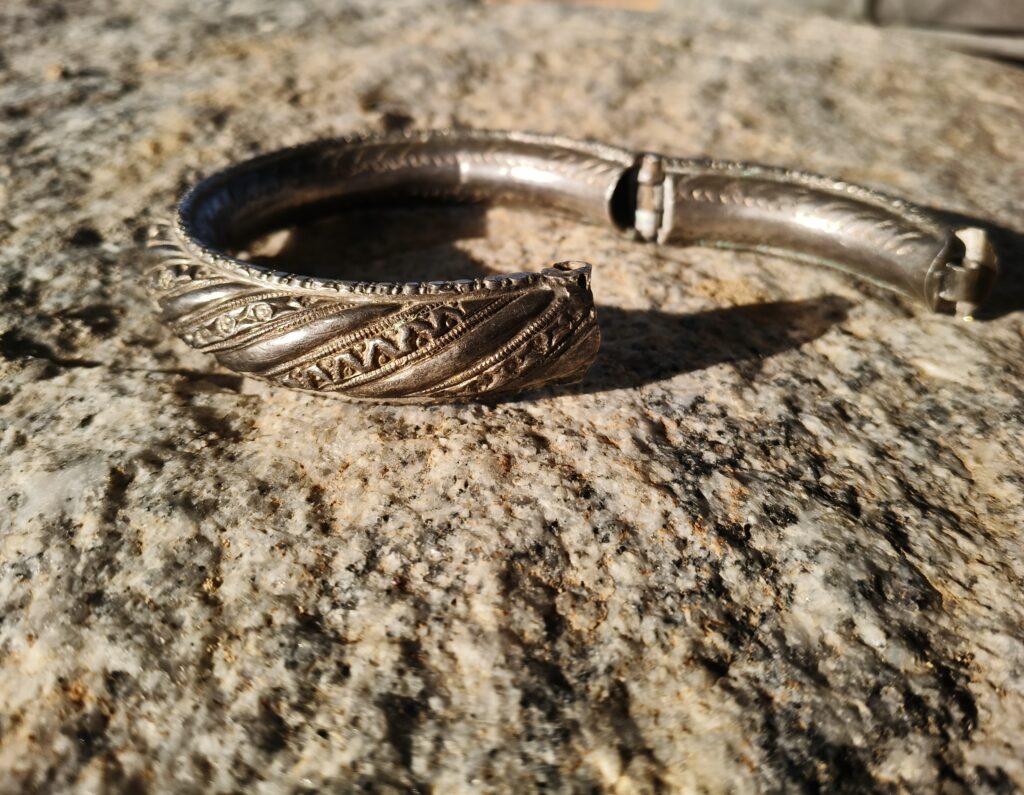
When my mother shared the story of the kada with me, I was filled with awe and curiosity. I wanted to know more—how did the kada come to be with Lal Bai? Did she receive it before or after her marriage? Had she worn it, and had that the warmth and smell of her skin mixed with the patina of the kada? Why did she choose this piece, of all things, to pass on? And why the secrecy? But answers weren’t easy to come by. Lal Bai had long passed, and with her went the details of the ornament’s origins. My mother told me that even her siblings didn’t know she had it, honouring the promise made to her grandmother.
As I held the kada, I felt a mix of emotions: curiosity, wonder, and a sense of connection beyond my time. It was like stepping into a mystery, a puzzle waiting to be solved. At times, I felt stuck, as if the answers were locked away forever. But the more I thought about it, the more I realized that the kada’s true significance lay in the story was fated to pass down, representing the quiet strength of the women in my family—the resilience of Lal Bai, who ensured my mother’s dreams were protected, and the courage of my mother, who turned those dreams into reality. It had transformed into a symbol of breaking barriers.
For me, the kada is more than an heirloom. It’s a reminder of the strength that runs in my blood. A history I hold close to my heart, one that continues to inspire me—and hopefully, others—with each passing day.
